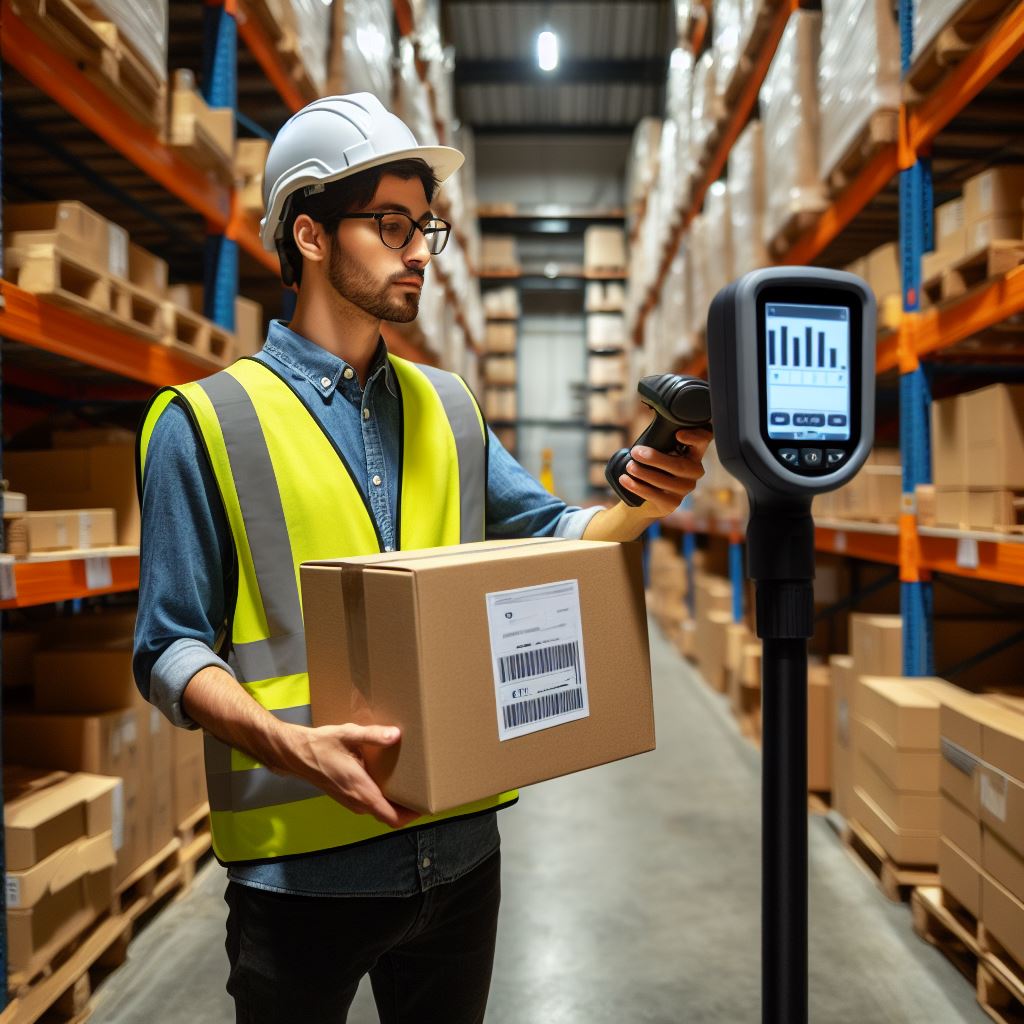RFID Technology: Revolutionizing Inventory Systems

Introduction
In today’s fast-paced world, inventory management is a critical aspect of any business. The ability to track inventory in real-time, monitor stock levels, and manage supply chain operations is essential for businesses to remain competitive. Radio-frequency identification (RFID) technology has emerged as a game-changer in the inventory management industry, revolutionizing the way businesses manage their inventory. In this article, we will explore how to revolutionize inventory systems with RFID and how businesses can benefit from its implementation.
What is RFID Technology?

RFID technology is a wireless communication technology that uses radio waves to identify and track objects tagged with RFID tags. The tags contain an antenna and a microchip that stores information about the item being tracked. When the tag is scanned by an RFID reader, the information on the tag is transmitted to the reader, which then performs an action based on the information received.
How Does RFID Technology Work?
RFID technology consists of three major components: the RFID tag, reader, and software. Each of these components plays a critical role in the functionality of the technology. RFID tags come in various sizes and shapes, including passive and active tags. Passive tags are smaller and more affordable, while active tags have a longer read range and can offer additional functionality. RFID readers come in different types, such as handheld, fixed, and mobile readers. Handheld readers are portable, while fixed readers are installed in a specific location. RFID software is an essential component of the technology, enabling the user to manage the data collected by the RFID reader. The software can be used to monitor inventory levels, track the movement of products, and manage supply chain operations.
Advantages of RFID Technology for Inventory Management
RFID technology provides real-time inventory tracking, improved accuracy, and cost savings. It also provides greater visibility into stock levels and enables businesses to streamline their operations. However, implementing RFID technology can be challenging, requiring specialized knowledge and expertise. It can also be relatively expensive and can raise privacy concerns. RFID technology can be affected by interference from other electronic devices, and its read range is limited. Despite these challenges, RFID technology is an essential tool for businesses looking to improve their inventory management operations.
| Advantages | Disadvantages |
| Real-time inventory tracking | Technological competency |
| Improved accuracy | Relatively costlier |
| Cost savings | Interference |
| Greater visibility | Privacy concerns |
| Streamlined operations | Limited read range |
Differences Between RFID Technology and Traditional Inventory Management
RFID technology differs from traditional inventory management in several ways. Unlike traditional inventory management, which relies on manual processes, RFID technology provides real-time data that facilitates tracking, locating, and monitoring of inventory items. RFID technology eliminates the need for manual data entry, reducing the risk of errors associated with manual counts. RFID technology also enables businesses to track inventory in real-time, providing greater visibility into stock levels and enabling businesses to make informed decisions about inventory management.
Implementing RFID Technology in Inventory Management
Implementing RFID technology in inventory management requires careful planning and execution. Businesses must first identify the areas where RFID technology can be most beneficial and develop a plan for implementing the technology. The plan should include a timeline for implementation, a budget, and a team responsible for overseeing the implementation process. Businesses must also ensure that their existing systems are compatible with RFID technology and that their employees are trained to use the technology effectively.
Overcoming Challenges in Implementing RFID Technology
Implementing RFID technology in inventory management can be challenging. Businesses must overcome several challenges, including the cost of implementing the technology, the complexity of the technology, and the need for employee training. However, the benefits of RFID technology far outweigh the challenges, making it a worthwhile investment for businesses looking to improve their inventory management operations.
Real-Life Examples of RFID Technology in Inventory Management
RFID technology has been implemented in various industries, including retail, healthcare, and logistics. Zara, a clothing retailer, uses RFID technology to track inventory in real-time, which has enabled the company to reduce inventory discrepancies and improve its supply chain operations. In healthcare, RFID technology is used to track medical equipment, reducing the risk of lost or misplaced equipment. In logistics, RFID technology is used to track shipments, providing greater visibility into the supply chain and enabling businesses to make informed decisions about inventory management.
Future of RFID Technology in Inventory Management
RFID technology is expected to become more advanced and accessible in the future, making it easier for businesses of all sizes to implement. The technology is expected to continue to revolutionize the way businesses manage their inventory. With real-time tracking, improved accuracy, and cost savings, RFID technology is essential for businesses looking to streamline their operations and improve their bottom line.
Embracing the Benefits of RFID Technology for Inventory Management
RFID technology has revolutionized the way businesses manage their inventory. With real-time tracking, improved accuracy, and cost savings, RFID technology is essential for businesses looking to streamline their operations and improve their bottom line. Here are some of the benefits of RFID technology for inventory management:
- Real-Time Inventory Tracking: RFID technology provides real-time data that facilitates tracking, locating, and monitoring of inventory items. This enables businesses to track inventory in real-time, providing greater visibility into stock levels and enabling businesses to make informed decisions about inventory management.
- Improved Accuracy: RFID technology eliminates the need for manual data entry, reducing the risk of errors associated with manual counts. This improves the accuracy of inventory management, reducing the risk of stockouts and overstocking.
- Cost Savings: RFID technology can help businesses save money by reducing the need for manual labor and improving the accuracy of inventory management. This can help businesses reduce costs associated with inventory management, such as labor costs and inventory carrying costs.
- Greater Visibility: RFID technology provides greater visibility into stock levels, enabling businesses to make informed decisions about inventory management. This can help businesses optimize their inventory levels, reducing the risk of stockouts and overstocking.
- Streamlined Operations: RFID technology can help businesses streamline their operations by reducing the need for manual labor and improving the accuracy of inventory management. This can help businesses reduce the time and resources required for inventory management, enabling them to focus on other aspects of their business.
Conclusion

RFID technology has revolutionized the way businesses manage their inventory. With real-time tracking, improved accuracy, and cost savings, RFID technology is essential for businesses looking to streamline their operations and improve their bottom line. By embracing the benefits of RFID technology, businesses can optimize their inventory levels, reduce costs, and improve their supply chain operations.
FAQs
- What is RFID technology? RFID technology is a wireless communication technology that uses radio waves to identify and track objects tagged with RFID tags.
- What are the advantages of RFID technology for inventory management? RFID technology provides numerous benefits, including real-time inventory tracking, improved accuracy, and cost savings.
- How does RFID technology differ from traditional inventory management? RFID technology differs from traditional inventory management in several ways. Unlike traditional inventory management, which relies on manual processes, RFID technology provides real-time data that facilitates tracking, locating, and monitoring of inventory items.
- What are some of the challenges associated with implementing RFID technology? Implementing RFID technology in inventory management can be challenging. Businesses must overcome several challenges, including the cost of implementing the technology, the complexity of the technology, and the need for employee training.
- What is the future of RFID technology in inventory management? RFID technology is expected to continue to revolutionize the way businesses manage their inventory. The technology is becoming more affordable and accessible, making it easier for businesses of all sizes to implement.